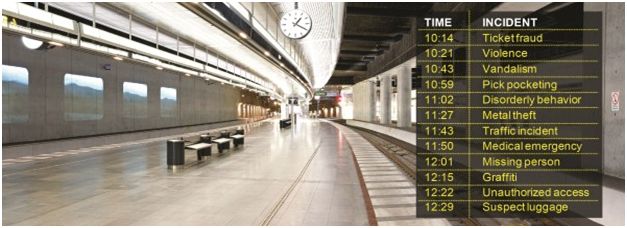
Decades ago, the transportation sector was one of the earliest adopters of CCTV surveillance – understandable given security’s crucial role in encouraging people to use public services. Transport authorities must keep their systems running with as few interruptions as possible, so they must know what’s happening at all times – whether at stations, on board trains, or along the transport network – and this is where network video can make a significant difference.
From Forensic To Real-Time Security
Stations and transportation systems are exposed to numerous security incidents every day, ranging from vandalism and graffiti to robbery and violence.
With a traditional analogue surveillance system, camera footage is mainly used forensically to investigate incidents after they’ve occurred.
In a network-based solution the video plays a much more crucial role, offering the efficient monitoring of and response to incidents in real-time.
Transport surveillance One of the major advantages of network video is the option to access and share live footage from security cameras wirelessly over a computer network, enabling transport managers to efficiently monitor all stations, vehicles and infrastructure from one (or a few) designated security locations.
Even if several incidents occur simultaneously, a network video solution provides the real-time video images needed to get a complete view of a situation.
Efficient incident response To fully understand the value of real-time access to live surveillance video, one has to consider events in a security centre when an incident occurs.
Source: ifsecglobal.com
